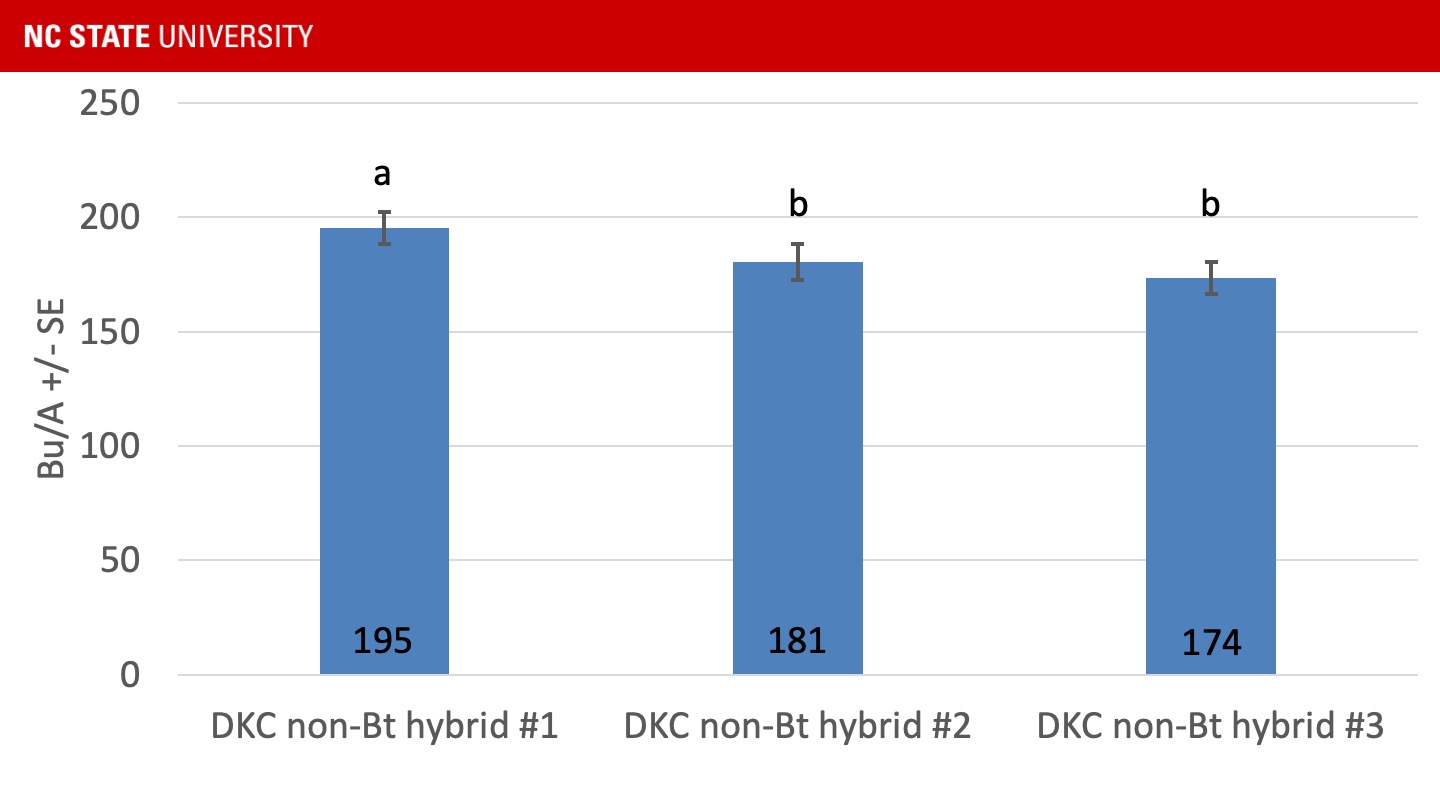Non-Bt Hybrid Performance in the 2023 OVT
go.ncsu.edu/readext?970086
en Español / em Português
El inglés es el idioma de control de esta página. En la medida en que haya algún conflicto entre la traducción al inglés y la traducción, el inglés prevalece.
Al hacer clic en el enlace de traducción se activa un servicio de traducción gratuito para convertir la página al español. Al igual que con cualquier traducción por Internet, la conversión no es sensible al contexto y puede que no traduzca el texto en su significado original. NC State Extension no garantiza la exactitud del texto traducido. Por favor, tenga en cuenta que algunas aplicaciones y/o servicios pueden no funcionar como se espera cuando se traducen.
Português
Inglês é o idioma de controle desta página. Na medida que haja algum conflito entre o texto original em Inglês e a tradução, o Inglês prevalece.
Ao clicar no link de tradução, um serviço gratuito de tradução será ativado para converter a página para o Português. Como em qualquer tradução pela internet, a conversão não é sensivel ao contexto e pode não ocorrer a tradução para o significado orginal. O serviço de Extensão da Carolina do Norte (NC State Extension) não garante a exatidão do texto traduzido. Por favor, observe que algumas funções ou serviços podem não funcionar como esperado após a tradução.
English
English is the controlling language of this page. To the extent there is any conflict between the English text and the translation, English controls.
Clicking on the translation link activates a free translation service to convert the page to Spanish. As with any Internet translation, the conversion is not context-sensitive and may not translate the text to its original meaning. NC State Extension does not guarantee the accuracy of the translated text. Please note that some applications and/or services may not function as expected when translated.
Collapse ▲I’ve written previously about why North Carolina corn growers should feel comfortable planting non-Bt refuge corn, but the performance of non-Bt hybrids in the 2022 OVTs and 2023 OVTs adds one more reason to the list. We have a collaborative project to evaluate non-Bt and Bt hybrids for yield on growers farms across the state. While these on-farm tests are planted in strips using grower equipment (much like the on-Farm Cotton Variety Evaluation Program), the OVTs are planted into smaller plots. There is value in both approached and we hope to make the on-farm non-Bt and Bt information available soon.
Growers can use the Variety Selection Tool to search for these hybrids that were planted in the 2023 OVTs. An identifying column entitled BT Status will identify whether the hybrid is a Bt or non-Bt hybrid when querying or filtering the data.
Eight non-Bt hybrids were included in nine OVT locations in 2023. All were late or mid-maturing hybrids produced by DEKALB and one was from Pioneer. This year one non-Bt hybrid yielded exceptionally well across all locations. It was the second highest yielding corn hybrid across all locations averaging 222.7 bu/A statewide. Other non-Bt hybrids did not yield as well across all locations, but three were among the statistically highest-yielding hybrids in one or more locations. This highlights the fact that:
1) A non-Bt hybrid with good genetics can perform as well as many Bt hybrids when planted on time and placed in the correct environment.
2) A non-Bt hybrid placed in a poor environment will perform poorly, even in the same relative maturity as other Bt hybrids- genetics matters!
We have measured this before. Here are yield results from three non-Bt hybrids grown in replicated trials from 2019-2023 (5 years) at the Tidewater Research Station in North Carolina. Note that the average yield difference between the top yielding non-Bt hybrid and the lowest yielding non-Bt hybrid across those five years is 22 bu/A. Growers should work with their seed dealer to ensure that they are planting the correct non-Bt refuge hybrid for their environment.



